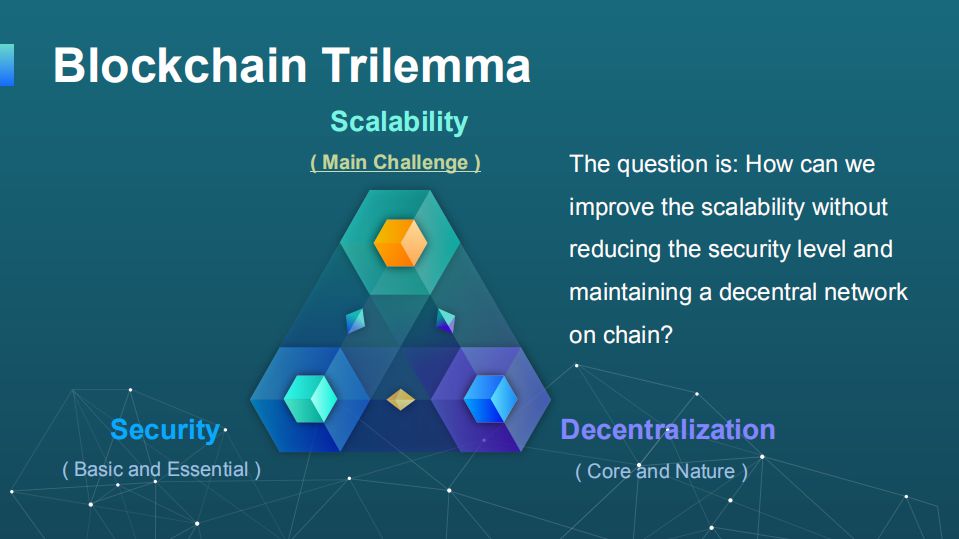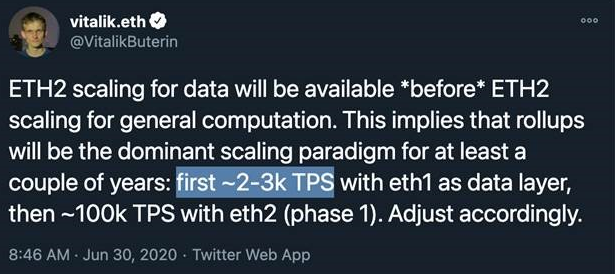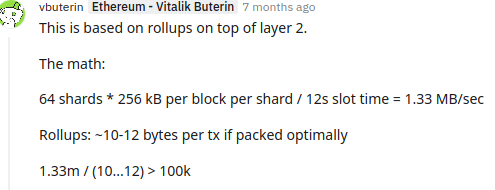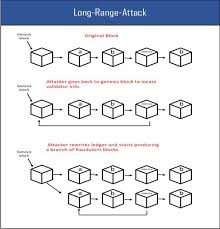
(1/29)
#Cardano “We are Going for Number One”
Cardano will replace Ethereum.
Let me preface the fact that while I truly believe in the interoperability of blockchain and that the “there can only be one” maximalist ideology is the antithesis of decentralization,
#Cardano “We are Going for Number One”
Cardano will replace Ethereum.
Let me preface the fact that while I truly believe in the interoperability of blockchain and that the “there can only be one” maximalist ideology is the antithesis of decentralization,

(2/29)
the time for #Cardano to carve its way to the top and reign as king, is now.
Also, before we dive deep into this, I will also preface that I will not get into the specifics of each technology as they are robust and will have their own threads in the future.
the time for #Cardano to carve its way to the top and reign as king, is now.
Also, before we dive deep into this, I will also preface that I will not get into the specifics of each technology as they are robust and will have their own threads in the future.
(3/29)
The purpose for this is to purely compare the differences between #Ethereum and #Cardano.
Let’s take a look at the most prevalent problem blockchain faces as an industry and arguably the most important driver in global adoption, “The Blockchain Trilemma.”
The purpose for this is to purely compare the differences between #Ethereum and #Cardano.
Let’s take a look at the most prevalent problem blockchain faces as an industry and arguably the most important driver in global adoption, “The Blockchain Trilemma.”

(4/29)
How does one create the most efficiently scalable, secure and decentralized blockchain.
Lets take a look at an important piece of blockchain, TPS (transaction per second) .
Annoyingly, the cryptocurrency space likes to legitimize a blockchain based off of the TPS
How does one create the most efficiently scalable, secure and decentralized blockchain.
Lets take a look at an important piece of blockchain, TPS (transaction per second) .
Annoyingly, the cryptocurrency space likes to legitimize a blockchain based off of the TPS
(5/29)
but the true measurement should be DTPS (decentralized transactions per second) as that is the factor more representational of a decentralized ecosystem.
DTPS = Dq * TPS
but the true measurement should be DTPS (decentralized transactions per second) as that is the factor more representational of a decentralized ecosystem.
DTPS = Dq * TPS
(6/29)
Dq (decentralized quotient) is a measurement to quantify the level of decentralization a blockchain has, measured between 0 and 1.
#Cardano, being the most decentralized blockchain in the space, we will give a factor of .8.
Dq (decentralized quotient) is a measurement to quantify the level of decentralization a blockchain has, measured between 0 and 1.
#Cardano, being the most decentralized blockchain in the space, we will give a factor of .8.
(7/29)
#Cardano, with the addition of Hydra, an isomorphic multi-party state channel that will act as a layer-2 solution and will fall onto the existing layer-1 mainnet settlement layer has proved to handle ~1 millions transactions per second in simulation.
#Cardano, with the addition of Hydra, an isomorphic multi-party state channel that will act as a layer-2 solution and will fall onto the existing layer-1 mainnet settlement layer has proved to handle ~1 millions transactions per second in simulation.
(8/29)
How does this work?
Hydra, uses state channels, or “heads”, an offchain protocol for concurrent and asynchronous settlement. Each Hydra head can handle up to 1000 TPS and sits on the existing mainnet which is used for transaction verification, finality, and security.
How does this work?
Hydra, uses state channels, or “heads”, an offchain protocol for concurrent and asynchronous settlement. Each Hydra head can handle up to 1000 TPS and sits on the existing mainnet which is used for transaction verification, finality, and security.

(9/29)
Let’s take a look at how many nodes there are currently in the ecosystem and how many nodes are block-producing.
According to pooltool.io there are currently 1,577 total stake pools operating. Of those 1,577 stake pools, only 1,085 are block-producing.
Let’s take a look at how many nodes there are currently in the ecosystem and how many nodes are block-producing.
According to pooltool.io there are currently 1,577 total stake pools operating. Of those 1,577 stake pools, only 1,085 are block-producing.

(10/29)
So if there are 1,085 block-producing nodes and a Hydra “head” optimizing ~1,000 TPS/second we can theoretically get to a number of a round 1,085,000 TPS.
1,085,000 * .8 = 868,000 DTPS.
So if there are 1,085 block-producing nodes and a Hydra “head” optimizing ~1,000 TPS/second we can theoretically get to a number of a round 1,085,000 TPS.
1,085,000 * .8 = 868,000 DTPS.
(11/29)
The history of #Ethereum scalability is haphazard and convoluted to say the least, from Plasma to ZK rollups, to now the killing of ETH 1.0 and introduction of ETH 2.0 with staking and sharding and a whole new genesis block, who knows that the fuck is going on.
The history of #Ethereum scalability is haphazard and convoluted to say the least, from Plasma to ZK rollups, to now the killing of ETH 1.0 and introduction of ETH 2.0 with staking and sharding and a whole new genesis block, who knows that the fuck is going on.
(12/29)
Let’s stay optimistic and say their new Beacon Chain and the addition of sharding, which will spread the network load to 64 separate sharded chains does everything it is said to, according to @VitalikButerin this will only see a DTPS of around 100,000. Yikes.

Let’s stay optimistic and say their new Beacon Chain and the addition of sharding, which will spread the network load to 64 separate sharded chains does everything it is said to, according to @VitalikButerin this will only see a DTPS of around 100,000. Yikes.


(13/29)
Scalability & Decentralization
#Cardano 2 #Ethereum 0
Lets look at security now.
Lets look at this comparison at the time of writing, as ETH 2.0 is undelivered with no verifiable date of delivery or proof of concept for that matter.
Scalability & Decentralization
#Cardano 2 #Ethereum 0
Lets look at security now.
Lets look at this comparison at the time of writing, as ETH 2.0 is undelivered with no verifiable date of delivery or proof of concept for that matter.
(14/29)
ETH 2.0 will have Casper FFG + CBC Sharding v2.1, their POS protocol, and Cardano has Ouroboros.
Let’s start here:
ETH 2.0 will have Casper FFG + CBC Sharding v2.1, their POS protocol, and Cardano has Ouroboros.
Let’s start here:
(15/29)
Any PoS ledger consensus protocol should satisfy two fundamental properties: persistence and liveness. The first ensures that the ledger is final and immutable. The second ensures that transactions broadcasted by honest parties are eventually included in the ledger.
Any PoS ledger consensus protocol should satisfy two fundamental properties: persistence and liveness. The first ensures that the ledger is final and immutable. The second ensures that transactions broadcasted by honest parties are eventually included in the ledger.
(16/29)
As we all know, #Cardano makes all its implementation to the Ouroboros protocol after the publication of all necessary proofs providing a mathematical and formal-theory certainty before any practice is settled upon.
iohk.io/en/research/li…
As we all know, #Cardano makes all its implementation to the Ouroboros protocol after the publication of all necessary proofs providing a mathematical and formal-theory certainty before any practice is settled upon.
iohk.io/en/research/li…
(17/29)
This makes any and all written implementation provable and therefore secure.
Ouroboros has seen many upgrades and will continue to see more since inception, with each iteration provably solving more and more security problems ranging from bootstrapping problems
This makes any and all written implementation provable and therefore secure.
Ouroboros has seen many upgrades and will continue to see more since inception, with each iteration provably solving more and more security problems ranging from bootstrapping problems
(18/29)
like long-range atks to weak-subjectivity atks which were solved in its 3rd generation protocol Ouroboros Genesis. Ouroboros is the first PoS protocol that is mathematically proven to guarantee persistence and liveness in both a synchronous and semi-synchronous setting.
like long-range atks to weak-subjectivity atks which were solved in its 3rd generation protocol Ouroboros Genesis. Ouroboros is the first PoS protocol that is mathematically proven to guarantee persistence and liveness in both a synchronous and semi-synchronous setting.

(19/29)
Currently, #Cardano is working on Ouroboros Hydra which will implement the layer-2 scaling solution we discussed earlier, but just recently @IOHK_Charles teased something very interesting on Twitter, Ouroboros Omega, with attributes citing “Self-Healing.”
Currently, #Cardano is working on Ouroboros Hydra which will implement the layer-2 scaling solution we discussed earlier, but just recently @IOHK_Charles teased something very interesting on Twitter, Ouroboros Omega, with attributes citing “Self-Healing.”
(20/29)
This had me wondering what could possibly be Self-Healing. Although one can only guess, my assumption is that it may be a solution or even immunity to the 51% attack. Currently, no PoS protocol has solved the 51% attack.
This had me wondering what could possibly be Self-Healing. Although one can only guess, my assumption is that it may be a solution or even immunity to the 51% attack. Currently, no PoS protocol has solved the 51% attack.
(21/29)
Without getting into too much detail on how that would occur, the likelihood of it even happening on #Cardano are slim, but there is a non-zero chance. With that being said,
Without getting into too much detail on how that would occur, the likelihood of it even happening on #Cardano are slim, but there is a non-zero chance. With that being said,
(22/29)
to have a provably secure way to prevent or to fully recover from such an attack would be utterly game-changing and would bring to the protocol the security the world is seeking.
This will be explained in another thread at another time.
to have a provably secure way to prevent or to fully recover from such an attack would be utterly game-changing and would bring to the protocol the security the world is seeking.
This will be explained in another thread at another time.
(23/29)
With that being said, #Ethereum Is still a PoW-based blockchain with plans to move its consensus protocol to PoS. At the time of this writing, ETH 2.0 is in its 2nd of a 4 part rollout plan, called Serenity, currently creating the sharded chains from the Beacon Chain.
With that being said, #Ethereum Is still a PoW-based blockchain with plans to move its consensus protocol to PoS. At the time of this writing, ETH 2.0 is in its 2nd of a 4 part rollout plan, called Serenity, currently creating the sharded chains from the Beacon Chain.
(24/29)
When the mainnet becomes a shard and when those shards are fully sharded, phases 3 and 4 of the roll out plan, respectively, is anyone's guess.
The fact of the matter is this,
When the mainnet becomes a shard and when those shards are fully sharded, phases 3 and 4 of the roll out plan, respectively, is anyone's guess.
The fact of the matter is this,
(25/29)
#Ethereum is not yet running a PoS consensus protocol and currently has minimal publications on how they will solve the problems that come with PoS so it is hard to gauge whether they will even be feasible. With the migration of major blockchains to PoS,
#Ethereum is not yet running a PoS consensus protocol and currently has minimal publications on how they will solve the problems that come with PoS so it is hard to gauge whether they will even be feasible. With the migration of major blockchains to PoS,
(26/29)
#Cardano is actually light years ahead of the curve, as they have been building and implementing with provable security from the very beginning.
#Cardano is actually light years ahead of the curve, as they have been building and implementing with provable security from the very beginning.
(27/29)
This is the base layer, the foundation of these blockchains and where all value will be derived in the future in innumerable ways
This is the base layer, the foundation of these blockchains and where all value will be derived in the future in innumerable ways
(28/29)
from supply chain process control, self-sovereign identity solutions, artificial intelligence, insurance, banking, tokenized real-estate and other assets, decentralized finance, global data settlement etc.
from supply chain process control, self-sovereign identity solutions, artificial intelligence, insurance, banking, tokenized real-estate and other assets, decentralized finance, global data settlement etc.
(29/29)
To have the most decentralized, scalable and secure foundational layer is to set yourself up to be first in line at the lunch table and #Cardano is fucking starving.
To have the most decentralized, scalable and secure foundational layer is to set yourself up to be first in line at the lunch table and #Cardano is fucking starving.

@EyeOfTheKing1
@Beastlyorion
@GenZod7
@CardanoDan
@cryptorecruitr
@rafael_leka
@_Cardano_ADA
@CardanoEffect
@IvanOnTech
@RealSaidov
@jasonappleton
@CryptoGainzz
@CryptoIRELAND1
@nierop_pieter
@KingCardano
@JRNYcrypto
@NewsAsset
@AltcoinDailyio
@Beastlyorion
@GenZod7
@CardanoDan
@cryptorecruitr
@rafael_leka
@_Cardano_ADA
@CardanoEffect
@IvanOnTech
@RealSaidov
@jasonappleton
@CryptoGainzz
@CryptoIRELAND1
@nierop_pieter
@KingCardano
@JRNYcrypto
@NewsAsset
@AltcoinDailyio
• • •
Missing some Tweet in this thread? You can try to
force a refresh


